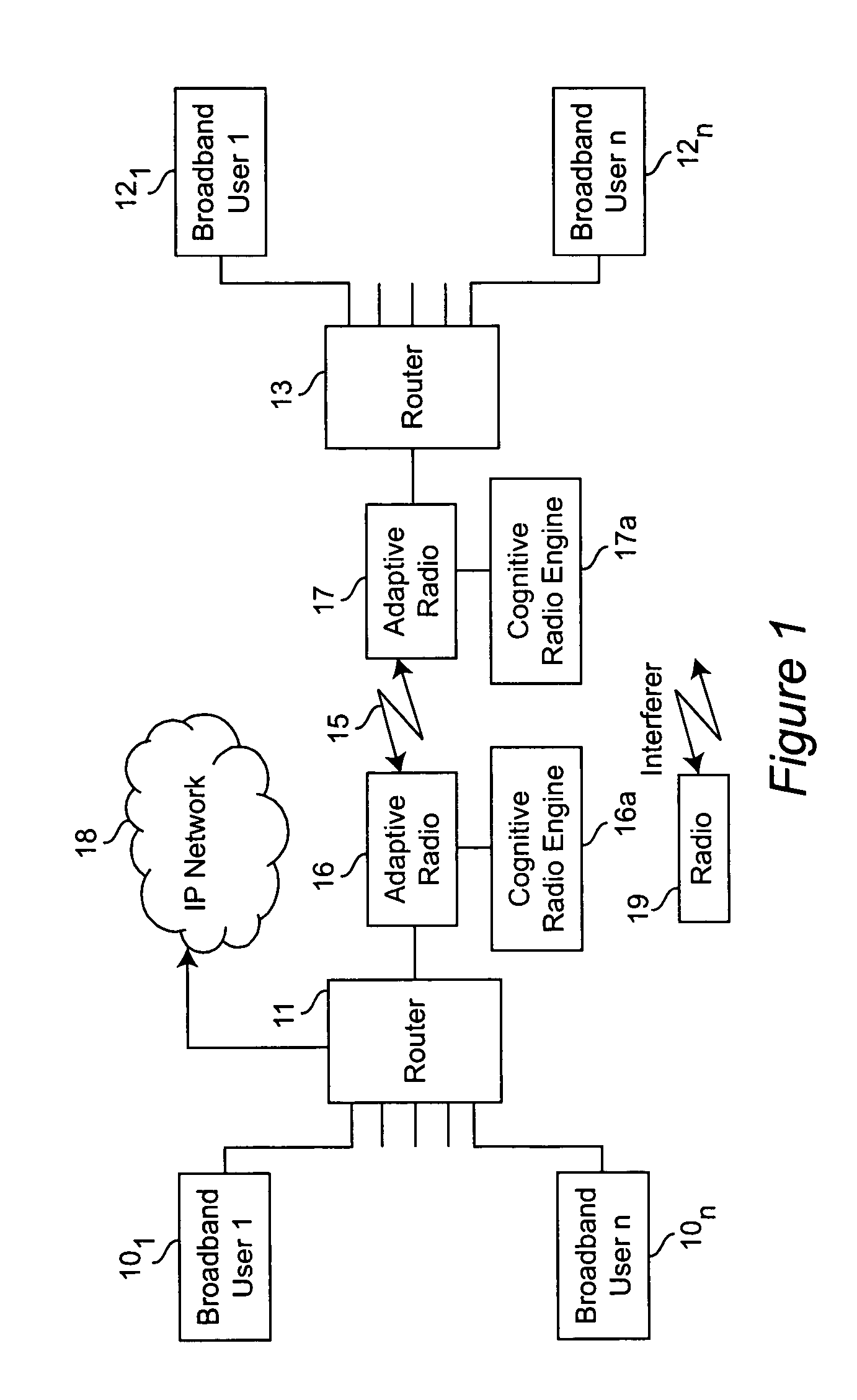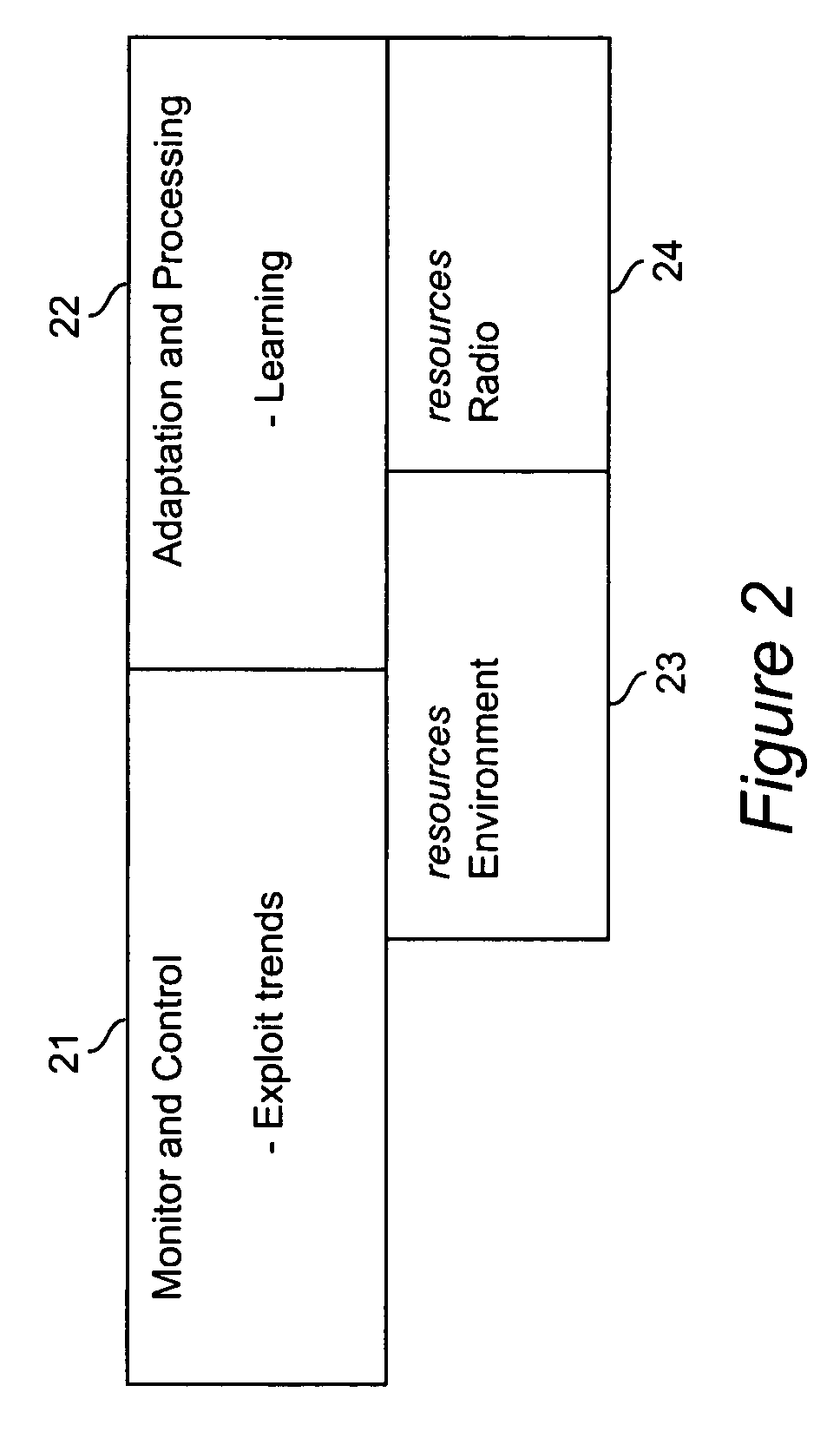Cognitive radio engine based on genetic algorithms in a network
a radio engine and network technology, applied in the field of radio systems, can solve the problems of system brittleness and radio may fail to take any useful action, and achieve the effect of enabling spontaneous inspiration and creativity
- Summary
- Abstract
- Description
- Claims
- Application Information
AI Technical Summary
Benefits of technology
Problems solved by technology
Method used
Image
Examples
Embodiment Construction
[0047]Referring now to the drawings, and more particularly to FIG. 1, there is shown an example of an implementation of the cognitive radio system according to the invention in a network having a broadband wireless RF link. The network comprises a first plurality of broadband users 101 to 10n connected to a first router 11 and a second plurality of broadband users 121 to 12n connected to a second router 13. The first and second routers 11 and 13 are connected by means of a cognitive radio link 15 established by a first adaptive radio 16 controlled by a cognitive radio engine 16a connected to router 11 and a second adaptive radio 17 controlled by a cognitive radio engine 17a connected to router 13. In this example, the router 11 is connected to a general internet protocol (IP) network, represented by a cloud 18. There is present in the illustrated environment a radio 19 which is a source of interference to the cognitive radio link 15. It is the function of the cognitive radio engines...
PUM
 Login to View More
Login to View More Abstract
Description
Claims
Application Information
 Login to View More
Login to View More - R&D
- Intellectual Property
- Life Sciences
- Materials
- Tech Scout
- Unparalleled Data Quality
- Higher Quality Content
- 60% Fewer Hallucinations
Browse by: Latest US Patents, China's latest patents, Technical Efficacy Thesaurus, Application Domain, Technology Topic, Popular Technical Reports.
© 2025 PatSnap. All rights reserved.Legal|Privacy policy|Modern Slavery Act Transparency Statement|Sitemap|About US| Contact US: help@patsnap.com



